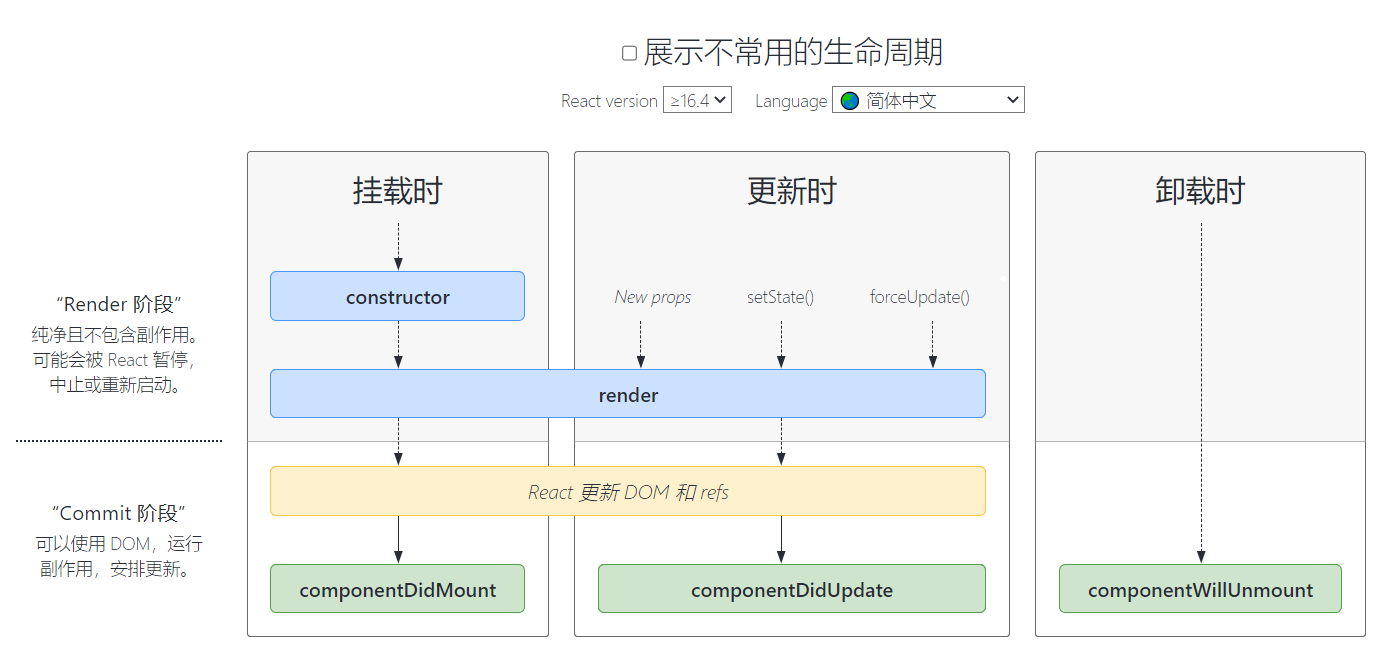# 详解常见生命周期钩子函数
在学习Vue的时候,我们就已经介绍了生命周期钩子函数的概念,React中也存在一些钩子函数。我们可以为类组件声明一些特殊的方法,当组件挂载、更新或卸载时就会去执行这些函数。
要想学习React类组件的生命周期钩子函数,可以参考生命周期图谱。地址:https://projects.wojtekmaj.pl/react-lifecycle-methods-diagram/

常见生命周期图谱
生命周期主要分为三个阶段:
- 挂载时
- 更新时
- 卸载时
挂载时对应的钩子函数有:constructor,render,componentDidMount。
更新时对应的钩子函数有:render,componentDidUpdate
卸载时对应的钩子函数有:componentWillUnmount
可以看到挂载时和更新时都有render这个方法。这就是为什么state改变的时候,会触发render重渲染操作。
class Welcome extends React.Component {
state = {
msg: 'hello world'
}
constructor(props){
super(props);
console.log('constructor');
}
componentDidMount = () => {
// react中发起ajax请求的初始操作,在这个钩子中完成
console.log('componentDidMount');
}
componentDidUpdate = () => {
// 等DOM更新后触发的钩子
console.log('componentDidUpdate');
}
componentWillUnmount = () => {
console.log('componentWillUnmount');
}
handleClick = () => {
/* this.setState({
msg: 'hi react'
}); */
//this.forceUpdate();
root.unmount(); // 触发卸载组件
}
render(){
console.log('render');
return (
<div>
<button onClick={this.handleClick}>点击</button>
{ this.state.msg }
</div>
);
}
}